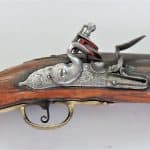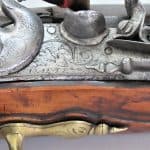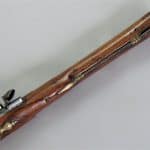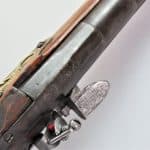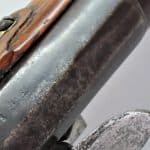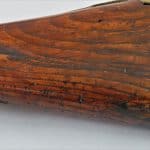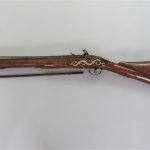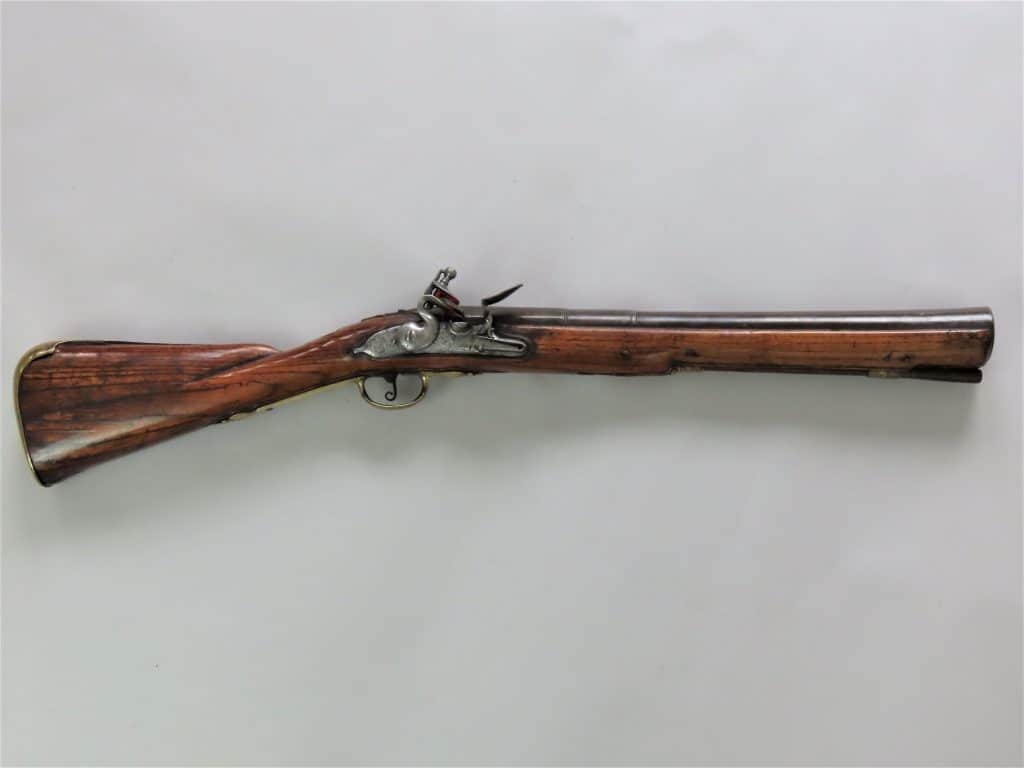
A Scarce English Blunderbuss dating to circa 1695 by John Dafte
To enquire about this itemplease click here
Price: £5,900
Ref: 079.22
Item Description
A scarce late 17th century English blunderbuss by John Dafte of London dating to circa 1695. Following the Restoration of the monarchy in England in 1660, firearms including blunderbusses increased in popularity in civilian life and in the Services, particularly in the Navy. A manuscript dated 1684 shows that ships were entitled to a number of blunderbusses represented as a proportion of the number of cannon employed on board.
John Dafte was part of a family of gunmakers by that name that worked in London and this blunderbuss is a fine example of his work. Dafte was part of a movement amongst gunmakers that helped develop London gunmaking to a hitherto unseen level of quality, leaving behind the austerity of the Civil War years as London prospered as an international city. This wave of innovation spread to other crafts and arts in the city.
John Dafte served his apprenticeship from 1660 with Henry Phipps, a member of the Gunmakers Company, and was made free in 1668. He was elected Assistant to the Company in 1686 and Master in 1694. He died in 1697 after which the business was continued by his wife for some time. He achieved notoriety due to supplying blunderbusses and pistols, possibly unknowingly, to the Rye House Plot Conspirators in 1683. The Plot was a plan to assassinate King Charles II and his brother, the heir to the throne, James Duke of York. The plan was to ambush the royal party when on its way from London to the races at Newmarket, but was never enacted because the races and the royal trip were cancelled due to a fire at Newmarket. Exposure of the Plot eventually led to the execution of twelve of the ring leaders, widespread imprisonments and deportations.
The blunderbuss is mounted with a heavy iron barrel of octagonal section at the breech. Unclear London Gun Company Proof and View Marks appear to be present on the off-side now aged into the iron. The iron tang extends from the breech and is screwed into an apron moulded into the stock. Beyond the octagonal flats, towards the muzzle, the barrel is shaped into two further smoothly rounded sections gently narrowing then widening towards the muzzle.
The bowed lock has a nippled tail bedded into a moulded apron carved into the Elm wood stock. The cock, the area behind it, and in front, is engraved sparingly, and attractively, with leafy scrolls. The scroll in front of the cock terminates in a serpent’s head, a common design feature at the time, and the maker’s mark I DAFTE is engraved underneath this scroll.
The lock is secured to the stock by three screws, two of which, with dome heads, are visible on the reverse side which also hold in place a brass engraved serpentine side plate. The trigger terminates in a backward scroll within the brass trigger guard. Behind the tang a brass escutcheon is engraved with a moustachioed mask. The stock has attractively contrasting horizontal grain lines and is mounted with a brass butt plate secured to the stock with two iron screws. The tapered ramrod is secured to the stock with two brass tubes moulded with raised bands. The outside of the trigger guard, and the top of the shaped butt plate, are engraved with designs of scrolls and flowers.
References: D R Baxter, “Blunderbusses”, Arms and Armour Press, 1970 and Howard L Blackmore, “A Dictionary of London Gunmakers”, 1350-1850, Phaidon, Christie’s Limited, 1986, page 78.
The blunderbuss is in good condition overall. There is sparse inactive old worm damage to the butt and old pitting to the iron parts. The wooden stock is a nice dark colour with some minor dents and bruising. The butt plate tail on top is raised slightly caused by shrinkage of the wooden butt. The barrel is just over 18.25 inches (46.25 cm) long, and the overall length of the blunderbuss measured extremity to extremity is 32.75 inches (just under 83 cm).



